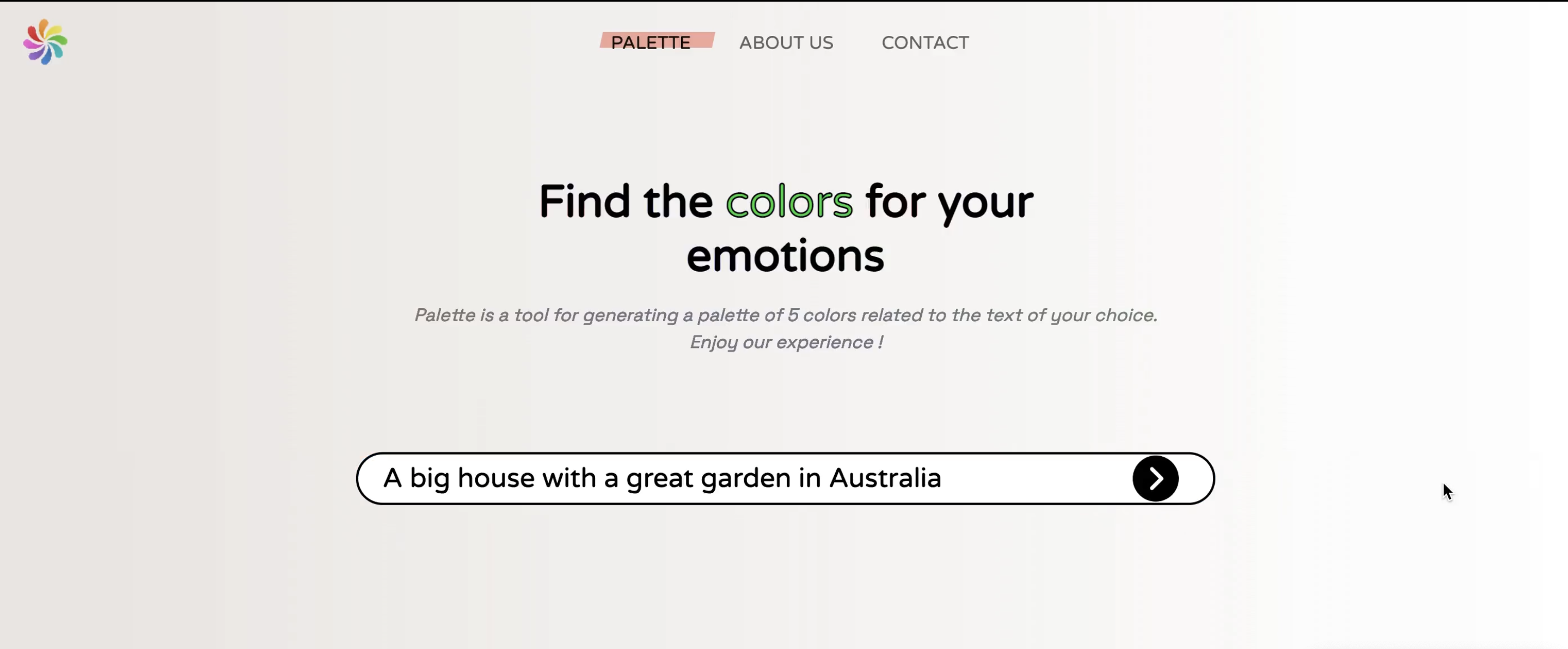Palette your emotions
Introduction
Palette your emotions is a project born out of the second-year TransPromotion initiative (4 months school project of 6 people) at ENSC. The goal of the project was to create an innovative tool that would generate a color palette based on emotions and sentiments extracted from text. By leveraging natural language processing (NLP) and emotion-color theory, we aimed to bridge the gap between human emotions and visual representation through color.
Concept and Approach
The idea behind Palette was simple yet ambitious: use artificial intelligence (AI) to analyze the sentiment of a text input and convert those emotions into corresponding colors. We explored existing research on the relationship between emotions and colors and studied how modern tools like OpenAI’s GPT-3 could help us perform sentiment analysis.
Our first challenge was to identify a way to accurately link emotions to colors in a universal and culturally relevant manner. We wanted to ensure that the emotions extracted from the text were reliably mapped to the appropriate hues, saturations, and tones that reflect those feelings.
Technical Solution
For the NLP part of the project, we opted to use OpenAI’s GPT-3 API, which provided us with a robust tool for understanding and analyzing sentiment from user input. The model generated insightful results, processing natural language and identifying emotional undertones from the given text. Based on these emotions, a color palette was generated, consisting of five colors that symbolized the detected emotions.
On the web development side, we implemented the project using Flask, a lightweight Python web framework. Flask allowed us to rapidly build and deploy our web application while keeping the system efficient and maintainable.
 Main page of palette where you sum up an idea.
Main page of palette where you sum up an idea.
 Palette of colors-emotions generated.
Palette of colors-emotions generated.
User Experience and Design
One of our core focuses was the user experience (UX). We paid close attention to the design and usability of the web interface to ensure it was both intuitive and visually appealing. The users simply input a sentence into the system, and our application returned a palette of colors linked to the emotions extracted from the sentence.
The design was kept minimalistic, with a focus on the colors themselves. We experimented with several layouts, eventually deciding on a clean, modern interface that provided a balance between text and color representation. This made the experience more enjoyable for the user while keeping the visual interaction aligned with the project’s theme.
Conclusion and Learnings
The Palette your emotions project was a valuable experience in applying AI and NLP to creative fields like visual design. We successfully developed a tool that not only translates emotions into colors but also offers an interesting perspective on how we can use technology to visualize human feelings.
Through this project, we also learned the limitations of existing models like GPT-3. Although powerful, these models come with certain constraints, especially when trying to capture nuanced emotions or applying them in specific cultural contexts. Going forward, further fine-tuning and the possibility of training our own models might enhance the accuracy of such applications.